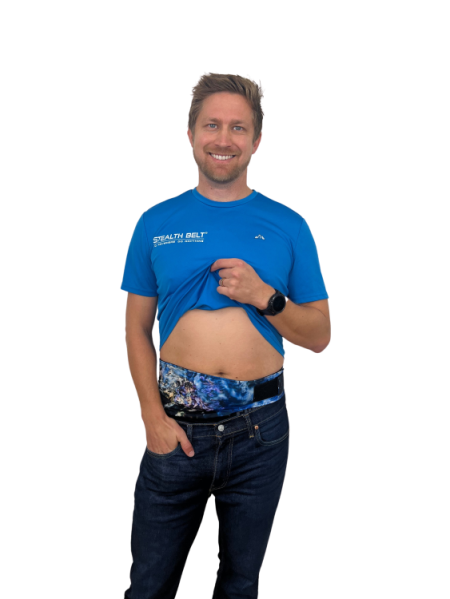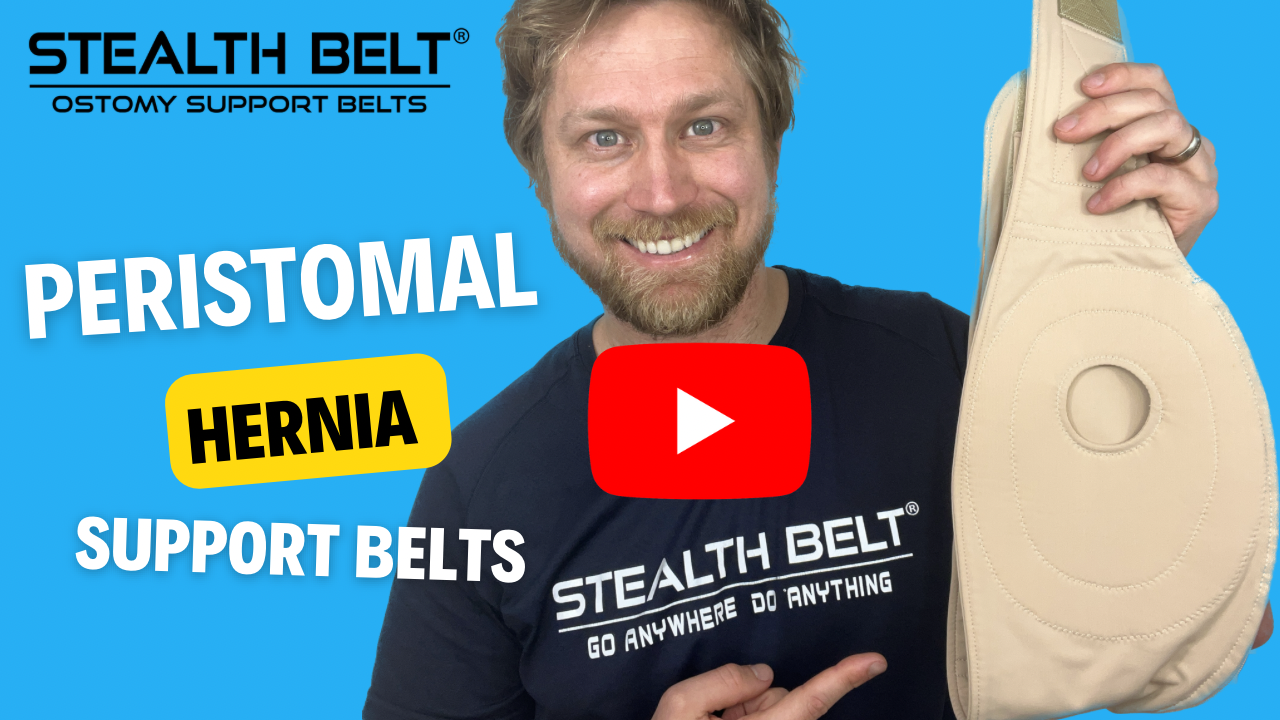- Home
- Core Strength And Hernia Prevention Resources
Core Strength + Hernia Prevention Resources
For You
As you may already be aware, having an ostomy puts you at an increased risk for developing a hernia. As an ostomate, it is important to understand that there is no such thing as a 'silver bullet' when it comes to avoiding a hernia. The best approach to take for hernia prevention is one that addresses the problem from multiple angles, which this resource page is set up to help you do. No matter your age or activity level, it is critical that you are patient and consistent with your approach to managing the risk of a hernia so that you can be free to Go Anywhere. Do Anything. with your ostomy.
What is a Parastomal Hernia?
A parastomal hernia occurs when the intestines press outward near a stoma, the hole created for a colostomy or ileostomy appliance. This causes a bulge under the skin. It can also cause pain and bothersome leakage. Parastomal hernias are the most common complication of ostomy surgery. Though rarely dangerous, severe symptoms may indicate the need for emergency treatment.
(Ref. Johns Hopkins)


Common Causes and Effects of Parastomal Hernias
Up to 78% of people who have an ostomy will develop a parastomal hernia after surgery. The majority of which will form in the first 2 years post-op.
Risk factors Include: older Age, increased BMI, increased waist circumference, respiratory comorbidity (excessive coughing), heavy lifting, inappropriate movement patterns, and inactivity. The development of a parastomal hernia can lead to pain and discomfort around the stoma, a physical bulging, difficulty reducing leaks due to appliance placement, skin irritation as a result of increased leakage, and generally a reduced overall quality of life.
(Ref: Parastomal Hernia, A Growing Problem with New Solutions)
Management of an Existing Hernia
It is estimated that 40-60% of parastomal hernias are not treatable through surgical repair. Those that are repaired by surgical implantation of supportive mesh have a relatively high recurrence rate. To improve the likelihood that surgery will succeed, it is recommended that repair is done as soon as possible after the hernia has formed, and the site of the stoma be re-located on the abdomen. (Ref: Parastomal Hernia, A Growing Problem with New Solutions)
Support Garments: Support garments are recommended for those who have existing hernias that cannot be repaired to help prevent the hernia from worsening. See next section for Stealth Belt's Hernia Support Options .


Preventing a Parastomal Hernia
Preventing a hernia from forming after surgery may be accomplished through a combination of strategies, including:
- Safely rebuilding core strength
- Wearing a support garment
- Improving diet / weight management
- Increasing activity level
- Fixing improper posture
Safely Rebuilding Core Strength With An Ostomy
10 Ostomy Core Exercises For Beginners
In order to prevent a hernia, it is important that you safely rebuild core strength after surgery. Stealth Belt Vice President Collin Jarvis had surgery in 2014, and shares the 10 exercises he started with to safely rebuild core strength during the first few months after surgery in order to return to physical activity.
If you're looking for a more in-depth article that discusses some safe strategies to talk to you doctor about, please reference this article written by Trish Massart, RHN, CPT on how to rebuild core strength:
Learn More
Stealth Belt's Hernia Support Products
Stealth Belt products provide some degree of hernia support and intra-abdominal pressure. The degree of support that you get from a Stealth Belt will be dependent on how tightly you choose to wear it. If you do not have a pre-existing hernia, please consider one of our standard belt options. For those who have a pre-existing hernia and require additional support, please contact us for a custom Stealth Belt with additional support.
Shop NowDiet, weight management, and an active lifestyle
10 Ostomy Core Exercises For Beginners
Living an active and healthy lifestyle is especially important for those of us with ostomies, since it can reduce the chances of a parastomal hernia from forming. Please take a look at these articles written by Trish Massart, RHN, CPT for some helpful information about how to approach a healthier diet:

Importance of Maintaining Good Posture For Ostomates
Why is fixing poor posture so important for ostomates?
As an ostomate, there are a number of reasons why your posture may not be as good as it could be. Improving this area of your life has been shown to reduce the likelihood of developing a hernia, and has a range of other positive benefits for those of us with an ostomy. Check out these posture-specific resources to see how fixing your posture could improve your life!
Read this article by Collin Jarvis for a more in-depth analysis of the importance of good posture and functional movement.
How Poor Posture Forms
Bad posture often develops as a result of inactivity and convenience. Desk jobs are the number one culprit, but for those of us with an ostomy there are some additional factors as well, such as:
- Weak core due to illness
- Surgery scarring
- Lowered confidence / depression / mental health factors
- Trying to 'hide' the ostomy by leaning forward


Benefits of Fixing Posture For Ostomates
By working on your posture, you can expect to see a surprising range of benefits. Here are some of the most relevant:
- Reduce chances of developing a hernia
- Improved confidence
click here
to see Amy Cudy Posture Study - Breathe easier by opening diaphragm
- Reduce leaks
learn more
Exercises to Improve Posture and Core Strength
8 exercises you can try to help fix poor posture
Check out this video resource where Stealth Belt Vice President Collin Jarvis shares 8 exercises he uses to help fix bad posture.
Disclaimer: This video is for educational purposes only and in no way represents medical treatment or advice for your specific condition. Please consult your physician before starting any new workout routines.

